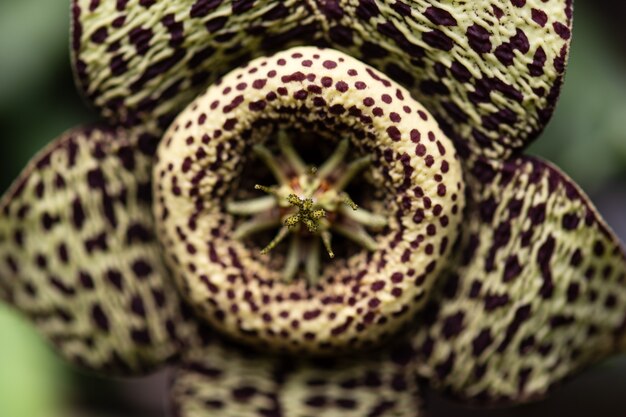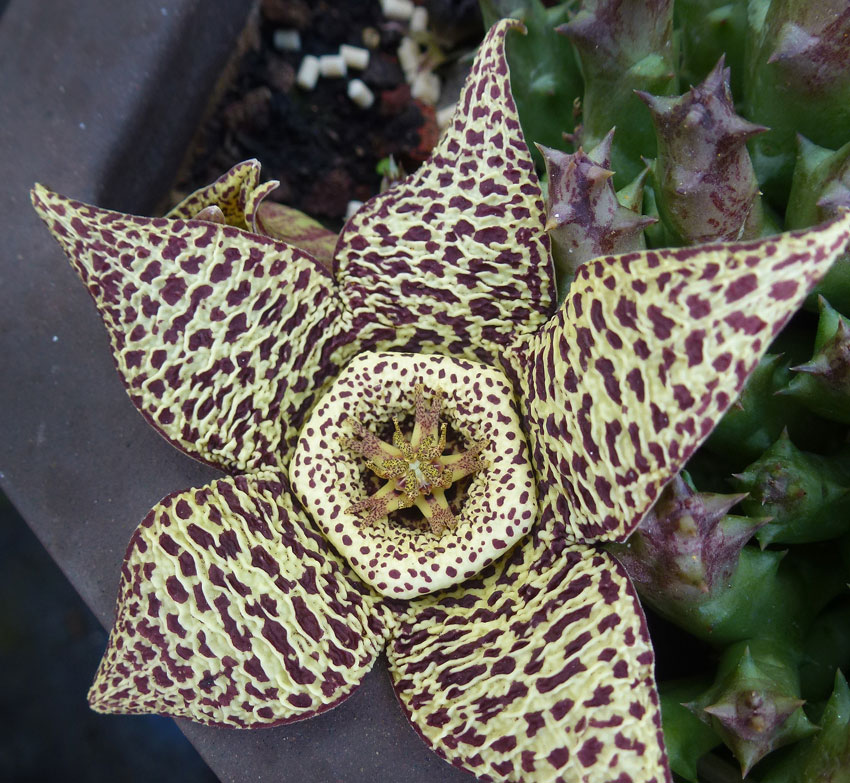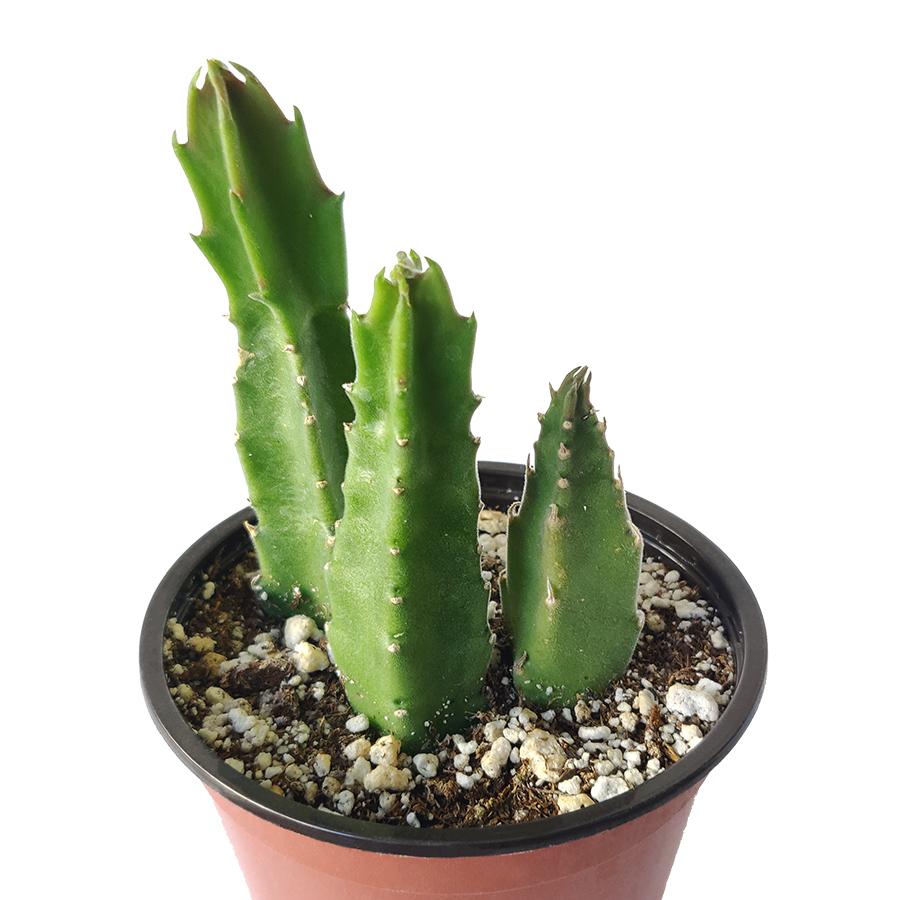
The genus Stapelia (family Asclepiadaceae) includes several hundred succulent plants originating from South Africa. Among them, Stapelia variegata seems quite insignificant at first glance. It is only once its flower has opened that one perceives the interest of this starfish cactus. However, spectacular as it is, the flower gives off a nauseous scent… How to take care of this Stapelia ?
The name stapelia was attributed to these succulents by Carl Von Linné . The botanist will choose to pay homage to a 17th century Dutch naturalist doctor, Johannes Bodaeus Van Stapel.
Description
Stapelia variegata is a delicate succulent plant emitting numerous lateral suckers which allow it to spread over time as a ground cover. It is therefore often grown in large cuts.
Its young stems 8 to 10 centimeters high, fat, are light green. They then turn purple-brown under the effect of the sun.
The buds give birth at the end of summer to superb yellow-spotted flowers, in the shape of a 5-pointed star 5 to 6 centimeters in diameter. Exhaling a pestilential smell, they attract pollinators (especially flies). They are nicknamed for this reason “ carrion flowers ”.

How to grow Stapelia?
If the plant grows wild in the mountains of the Cape Region in South Africa, it is unthinkable to cultivate it in the ground in France. Nevertheless, throughout the South of France, its outdoor cultivation is possible, on a balcony, a window sill facing south. Elsewhere, it will be content to grow it as a cold greenhouse plant taken out into the open air all summer.
Which soil for stapelia?
Prepare a very draining mixture based on garden soil and plenty of sand. As Stapelia variegata appreciates a very mineral substrate, small pieces of pozzolan, granite or lava rock can be mixed with earth and sand to further increase its draining power.
On the exposure side, this succulent plant likes full sun but accepts light partial shade if necessary.
Installation in a terracotta pot is preferable. This type of container allows the roots to breathe better and therefore limits their rotting.
What interview?
Like other succulents, maintenance is limited. A dry winter rest, in a temperature range of between 6 and 10°, is important to obtain more abundant flowering the following year.
Plants wintered indoors are indeed less floriferous. Therefore, in winter, keep the Stapelia outside in the South, sheltered from frost and extreme cold, and in an unheated veranda or greenhouse further north.
A little fertilizer mixed with the irrigation water in summer improves flowering.
Diseases
Stapelia sometimes turns yellow . This is often the result of over-watering or a little or badly drained substrate. In addition, avoid growing this type of succulents in a plastic pot, which is too waterproof and not breathable enough.
Flower buds may also dry out and fall off before they hatch. Here again, the watering is in question associated with a lack of heat. Move the pot to full sun as they approach.

How to take cuttings from a Stapelia?
Stapelias are very easy to take cuttings . Throughout the year, using a pair of scissors or a knife blade disinfected in alcohol, take a twisted or straight shoot about ten centimeters in length.
Leave to dry for a few days in a well-lit shelter so that the wound heals. Then push the cutting 1 to 2 centimeters into a small terracotta pot filled with a very sandy substrate. To avoid damaging the piece of stems, remember to make a pilot hole using a stick.
Water little but regularly, every 4 to 5 days. Finally, keep warm for the time of rooting (about 15 days).
